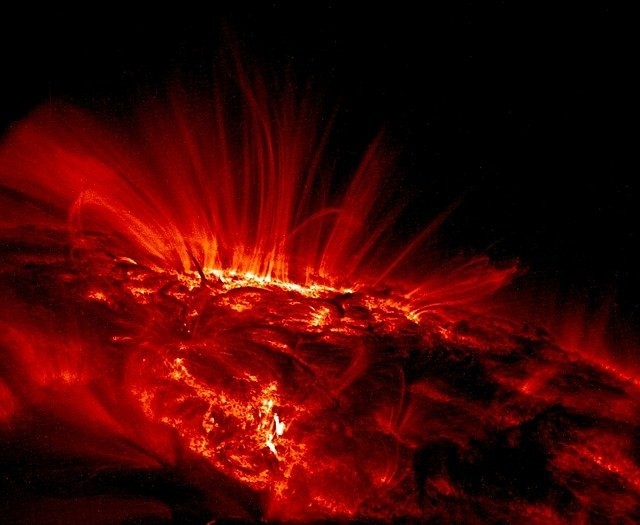There is a large sunspot on the surface of the Sun that is pointing toward Earth and is alarmingly quiet this week. Astronomers worry that there could be a big solar flare building inside, Forbes reported.
Scientists cataloged the sunspot as AR3089, which has been mellow but does not seem to be going away. Philips noted that it has developed into a delta-class magnetic field where X-class solar flares form, the strongest class of solar flares that can produce large amounts of energy on the most intense end of the scale.

X-Class Solar Flare Could Happen in the Next Three Days
"Could it be the calm before the storm?" former NASA astronomer Dr. Tony Philips wrote on SpaceWeather.com.
Earth's magnetosphere acts as protection to the atmosphere against harmful solar flares that come from the Sun, as well as the erosion and particle radiation from coronal mass ejections (CMEs).
However, X-class solar flares and CMEs that are often linked to them can create storms of radiation that pose a great threat and could damage satellites, disrupt communication systems, and adversely affect the power grid on the planet.
The strongest solar flare ever recorded happened in 2003, wherein experts classed it to be about X40 while sensors detected it to be around X16. The latest forecast from the National Oceanic and Atmospheric Administration's (NOAA) Space Weather Prediction Center said that the possibility that there could be an X-class solar flare over the next three days is about 5%.
Furthermore, the dangerous large sunspot is aimed directly at Earth so a powerful solar flare and CME will be visible. Experts said that even if the eruption does not come within that predicted period, Earth is still not safe from other Sun activity.
The Sun is currently building toward the peak of its 11-year sunspot activity that people on Earth should expect that it will be hyperactive for the next few years.
Sunspots and Solar Flares
The Sun's surface is composed of electrically charged gases that generate powerful magnetic forces known as magnetic fields. They are constantly moving and this motion creates a lot of activity that depends on their solar cycle, which could affect Earth.
According to NASA Space Place, sunspots are areas on the Sun's surface that appear dark because they are cooler than other parts, although it is still very hot at 6,500 degrees Fahrenheit.
Sunspots are relatively cooler than other areas of the Sun because they form at places where magnetic fields are strong that keep some of the heat within the Sun from reaching the surface. But they are also places where a sudden explosion of energy or solar flare happens.
Solar flares are very intense and release lots of radiation into space that can interfere with radio telecommunications on Earth. They are sometimes accompanied by CMEs, which are huge bubbles of radiation and charged particles from the Sun and explode into space at very high speed.
When charged particles from CMEs hit the Earth's magnetosphere, it could trigger the formation of auroras. But strong ones can interfere with power grids and cause electricity shortages and power outages.
RELATED ARTICLE : NASA Observatory Captures Sun Emitting Powerful Solar Flare That Caused 'Radio Blackout' On Europe and Africa
Check out more news and information on Solar Flare in Science Times.












